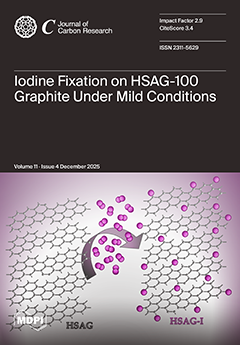This study evaluated the seasonal greenhouse gas (GHG) emissions and carbon assimilation of
Bambusa edulis under four soil amendment treatments—control (C), biochar (B), fertilizer using vermicompost (F), and biochar plus fertilizer (B + F)—in a coastal shelterbelt system in south-western Taiwan. Over a
[...] Read more.
This study evaluated the seasonal greenhouse gas (GHG) emissions and carbon assimilation of
Bambusa edulis under four soil amendment treatments—control (C), biochar (B), fertilizer using vermicompost (F), and biochar plus fertilizer (B + F)—in a coastal shelterbelt system in south-western Taiwan. Over a 12-month period, CO
2 and N
2O fluxes and photosynthetic carbon uptake were measured. The control (C) treatment served as the baseline, exhibiting the lowest greenhouse gas (GHG) emissions and carbon assimilation. Its summer N
2O emissions were 39.54 ± 20.79 g CO
2 e m
−2, and its spring carbon assimilation was 13.2 ± 0.84 kg CO
2 clump
−1. In comparison, the amendment treatments significantly enhanced both emissions and carbon uptake. The fertilizer-only (F) treatment resulted in the highest levels, with peak summer N
2O emissions increasing by 306.5% (to 160.73 ± 96.22 g CO
2 e m
−2) and spring carbon assimilation increasing by 40.2% (to 18.5 ± 0.62 kg CO
2 clump
−1). An increase in these values was also observed in the combined biochar and fertilizer (B + F) treatment, although the magnitude was less than that of the F treatment alone. In the B + F treatment, summer N
2O emissions increased by 130.3% (to 91.1 ± 62.51 g CO
2 e m
−2), while spring carbon assimilation increased by 17.4% (to 15.5 ± 0.36 kg CO
2 clump
−1). Soil CO
2 flux was significantly correlated with atmosphere temperature (r = 0.63,
p < 0.01) and rainfall (r = 0.45,
p < 0.05), while N
2O flux had a strong positive correlation with rainfall (r = 0.71,
p < 0.001). The findings highlight a trade-off between nutrient-driven productivity and GHG intensity and demonstrate that optimized organic and biochar applications can enhance photosynthetic carbon gain while mitigating emissions. The results support bamboo’s role in climate mitigation and carbon offset strategies within nature-based solution frameworks.
Full article





